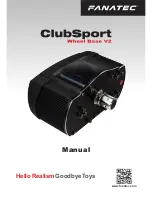
Design Considerations
CY8C20xx7/S CapSense
®
Design Guide
Doc. No. 001-78329 Rev. *E
51
Table 5-4. RAM and Flash Requirements
Filter Type
Filter
Order
RAM
(Bytes per sensor)
Flash (Bytes)
ImageCraft Compiler
Flash (Bytes)
ImageCraft Pro Compiler
Average
2
–8
6
675
665
IIR
1
2
429
412
2
6
767
622
Median
3
6
516
450
5
10
516
450
Jitter filter on raw counts
N/A
2
277
250
Jitter filter on slider centroid
N/A
2
131
109
5.5 Power Consumption
5.5.1 System Design Recommendations
For many designs, minimizing power consumption is an important goal. There are several ways to reduce the power
consumption of your CapSense capacitive touch-sensing system.
Set GPIO drive mode for low power
Turnoff the high-power blocks
Optimize CPU speed for low power
Operate at a lower V
DD
In addition to these suggestions, applying the sleep-scan method can be very effective.
5.5.2 Sleep-Scan Method
In typical applications, the CapSense controller does not need to always be in the active state. The device can be put
into the sleep state to stop the CPU and the major blocks of the device. Current consumed by the device in sleep
state is much lower than the active current.
The average current consumed by the device over a long period can be calculated by using the following equation.
𝐼
𝐴𝑉𝐸
=
𝐼
𝐴𝑐𝑡
×𝑡
𝐴𝑐𝑡
+(𝐼
𝑆𝑙𝑝
×𝑡
𝑆𝑙𝑝
)
𝑇
Equation 5-1
The average power consumed by the device can be calculated as follows:
𝑃
𝐴𝑉𝐸
= 𝑉
𝐷𝐷
× 𝐼
𝐴𝑉𝐸
Equation 5-2
5.5.3 Response Time versus Power Consumption
As illustrated in Equation 5-2, the average power consumption can be reduced by decreasing I
AVE
or V
DD
. I
AVE
may be
decreased by increasing sleep time. Increasing sleep time to a very high value will lead to poor CapSense button
response time. As a result, the sleep time must be based on system requirements.
In any application, if both power consumption and response time are important parameters to be considered, an
optimized method can be used that incorporates both continuous-scan and sleep-scan modes. In this method, the
device spends most of its time in sleep-scan mode where it scans the sensors and goes to sleep periodically, as
explained in the previous section, thereby consuming less power. When a user touches a sensor to operate the
system, the device jumps to continuous-scan mode where the sensors are scanned continuously without invoking
sleep, thereby giving very good response time. The device remains in continuous-scan mode for a specified timeout
period. If the user does not operate any sensor within this timeout period, the device jumps back to the sleep-scan
mode.
















































